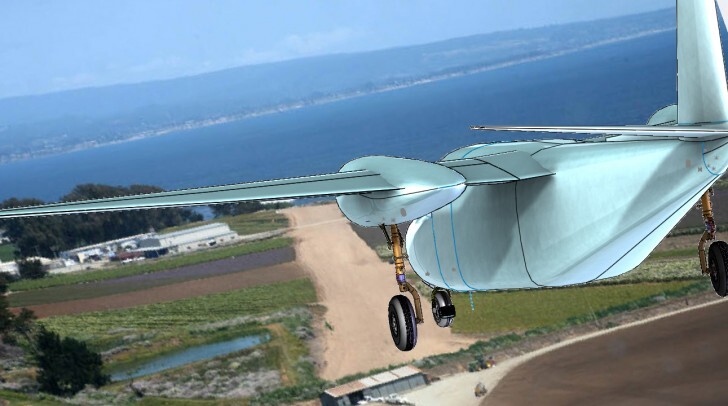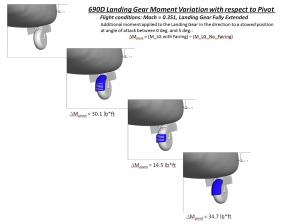First published in Flight Levels Online, Fall 2014 issue

Twin Commander Aircraft is proceeding with the design of a new nose wheel fairing that could be fitted to any model Twin Commander.
The fairing is intended to deflect rocks and other debris picked up by the nose wheel on the takeoff and landing roll that can cause damage to the belly of the aircraft aft of the nose wheel well. The nose wheel fairing will be offered as a new custom kit.
One unintended consequence of the low-slung Twin Commander ground profile is that as the nose wheel tire spools up on takeoff, and down on the landing roll, small rocks and debris picked up by the tire from the runway can be flung off onto the belly of the airplane, causing small nicks in the paint and even dents in the aluminum skin. This is especially true when operating from unimproved, wet, snowy, or slush-covered runways.
When Jetprop Commanders were still in production at Gulfstream Aerospace in Bethany, Oklahoma, engineers desgined a small fairing positioned on the back side of the nose wheel tire that blocked the debris as it flung off the tire. However, the fairing also acted as something of an air scoop, which added significant drag to the nose wheel assembly to the point that it could interfere with nose wheel landing gear extension. Original drawings cautioned that aircraft fitted with the fairing had to be flight-tested to ensure normal gear extension.
Twin Commander Aircraft has been researching an improved version of the original design, and found that reducing the overall size of the fairing and adding louvers reduces drag by more than 50 percent and increases its effectiveness in preventing FOD from impacting the belly. The idea for using louvers that allow air to flow through the fairing came from designs used on several military aircraft, said Twin Commander Aircraft Engineering Manager Levan Tabidze.

Analysis of various sizes of nose wheel fairing shows lower-drag advantage of
smaller louvered design.
The fairing would be attached to the nosewheel fork and sit directly behind and slightly lower than the nose wheel axle. It would be positioned so that it would absorb some of the energy of the FOD coming off the tire, and redirect it. Tabidze said they are researching the material to be use to fabricate the fairing –– fiberglass, carbon fiber, or aluminum.
Twin Commander recently polled owners and operators to gauge their interest in adding a nose wheel fairing to their aircraft, and 56 percent of those who responded said they would consider it. That strong affirmation led to the decision to proceed with the project. The fairing is now in the detail design phase, with a target date of the second quarter of 2015 for shipping custom kits to customers.
